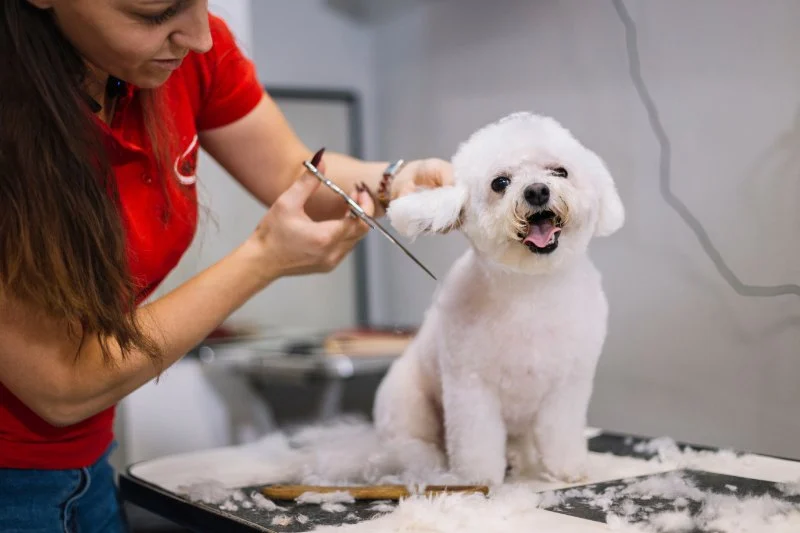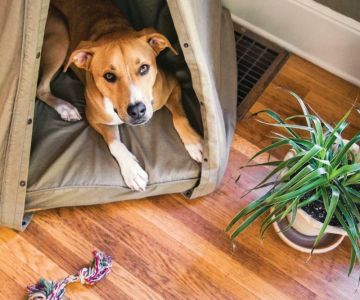
- 1. Importance of Pet Grooming
- 2. How Often Should I Groom My Pet?
- 3. Grooming for Different Dog Breeds
- 4. Grooming for Different Cat Breeds
- 5. Additional Tips for Effective Pet Grooming
1. Importance of Pet Grooming
Regular grooming is an essential aspect of pet care, ensuring that your pet remains healthy, comfortable, and happy. Grooming not only helps maintain a clean and shiny coat but also prevents skin issues, parasites, and matting. For both dogs and cats, grooming provides an opportunity to inspect their skin for signs of irritation or injury. In this guide, we’ll explore the best practices for grooming your pet based on their breed and specific needs.
2. How Often Should I Groom My Pet?
The frequency of grooming your pet depends largely on their breed, coat type, and activity level. While all pets benefit from regular grooming, the need for brushing, bathing, and nail trimming varies from one pet to another. For some pets, weekly grooming is essential, while others may only need attention every month. Understanding your pet's breed and coat type will help determine how often grooming should be done.

Purrfurred Pets Veterinary Clinic
SurpriseMaricopa CountyArizona
15601 W Bell Rd Suite #204, Surprise, AZ 85374, USA
3. Grooming for Different Dog Breeds
Each dog breed has unique grooming needs based on their coat type and size. Let’s take a look at the grooming frequency for some popular dog breeds:
Short-Haired Dogs
Short-haired dogs, like Beagles and Bulldogs, typically require less grooming. They usually only need brushing once a week to remove loose hair and reduce shedding. However, their nails should still be trimmed regularly to prevent overgrowth.
Long-Haired Dogs
Long-haired dogs, such as the Afghan Hound or Shih Tzu, require more frequent grooming. These breeds should be brushed several times a week to prevent tangles and mats. Additionally, long-haired dogs may require regular baths and occasional professional grooming sessions to maintain their coats.
Hypoallergenic Dogs
Breeds like Poodles and Schnauzers are often considered hypoallergenic because they shed less. However, their coats still require frequent maintenance. These dogs need to be brushed several times a week and may require a trim every month. Regular grooming helps prevent matting and skin irritation.
Double-Coated Dogs
Double-coated breeds like Golden Retrievers and Siberian Huskies need more attention during shedding seasons. They should be brushed several times a week, and professional grooming every few months is recommended to keep their coat in top condition.
4. Grooming for Different Cat Breeds
Cat grooming requirements also vary by breed. Whether your cat is long-haired or short-haired, grooming should be part of their regular care routine.
Short-Haired Cats
Short-haired cats, like the American Shorthair, need minimal grooming. Brushing once or twice a week is sufficient to remove loose hairs and prevent hairballs. Cats with short coats typically do not require regular baths.
Long-Haired Cats
Long-haired cats, such as Persians and Maine Coons, require more frequent grooming to prevent matting and tangling. They should be brushed daily to maintain their luxurious coats and avoid hairballs. Long-haired cats may also require occasional professional grooming to keep their coats in top shape.
Sphynx Cats
While Sphynx cats are hairless, they still require regular grooming. These cats produce oils on their skin that would normally be absorbed by their fur. Regular bathing is necessary to prevent buildup and keep their skin healthy.
5. Additional Tips for Effective Pet Grooming
Here are a few additional tips to make grooming easier and more effective for both dogs and cats:
- Start Grooming Early: Begin grooming your pet at a young age to help them get used to the process. This can make future grooming sessions more manageable and stress-free.
- Use the Right Tools: Ensure you have the appropriate grooming tools for your pet's coat type. A high-quality brush, nail clippers, and ear cleaning supplies are essential for proper grooming.
- Check for Skin Issues: While grooming, always check for skin issues, parasites, or wounds. Early detection can prevent more serious health problems.
- Don't Over-Bath: Bathing too often can dry out your pet’s skin and coat. Only bathe your pet when necessary, based on their grooming needs.
By following the right grooming routine for your pet’s breed, you can keep them healthy, comfortable, and looking great. If you need high-quality grooming supplies or services, visit Pet & Puppy for the best products and professional care options.








 1214 Central Store0.0 (0 reviews)
1214 Central Store0.0 (0 reviews) Burlington Pet Hospital4.0 (118 reviews)
Burlington Pet Hospital4.0 (118 reviews) ArkVets4.0 (426 reviews)
ArkVets4.0 (426 reviews) Hartzell Veterinary Service: Charles W. Hartzell, DVM and Sue Ann Hartzell, DVM4.0 (105 reviews)
Hartzell Veterinary Service: Charles W. Hartzell, DVM and Sue Ann Hartzell, DVM4.0 (105 reviews) Noah's Ark Animal Hospital4.0 (163 reviews)
Noah's Ark Animal Hospital4.0 (163 reviews) Jasper Pet Clinic4.0 (285 reviews)
Jasper Pet Clinic4.0 (285 reviews) Transitioning Training Methods as Pet Ages: Adapting Techniques for Senior Pets
Transitioning Training Methods as Pet Ages: Adapting Techniques for Senior Pets How to Read & Understand Pet Nutrition Labels for Your Pet's Health
How to Read & Understand Pet Nutrition Labels for Your Pet's Health How to Choose the Right Pet Supplement Brand: Essential Tips for Pet Owners
How to Choose the Right Pet Supplement Brand: Essential Tips for Pet Owners How Much Should You Feed Your Pet? Portion Guide by Age & Breed
How Much Should You Feed Your Pet? Portion Guide by Age & Breed How to Create a Pet Health Journal: Metrics to Track for Better Pet Care
How to Create a Pet Health Journal: Metrics to Track for Better Pet Care What Breed-Specific Health Issues You Should Be Aware Of
What Breed-Specific Health Issues You Should Be Aware Of